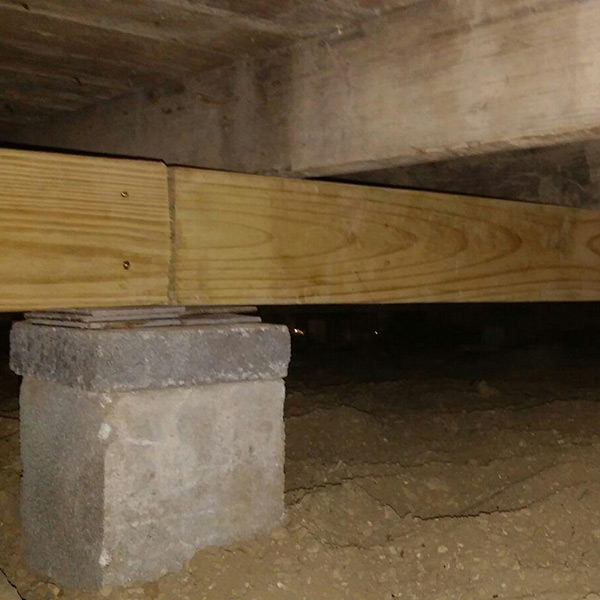Another name for pier and beam foundations is post and beam foundations. Pier and beam foundations are traditional foundations that were built before the 1960s. Construction of these foundations is expensive compared to slab foundations that are considered modern foundations. Despite the construction costs of pier and beam foundations, they are sometimes preferred over slab foundations since they can withstand substantial expansion and contraction of the soil. They are also advantageous when building in sloppy or flood-prone areas.
The strength of a building relies on its foundation, but occasionally, Pier and beam foundations fail. There are various reasons why foundations may fail. The grounds include fluctuating structure temperatures, soil moisture, construction, drainage challenges, and old plumbing. Some of the symptoms that signal a failed pier and beam foundation are discussed below.
Sticking of Exterior or Interior Doors
Sticking doors is a symptom of failed pier and beam foundation repairs. Sometimes, doors stick due to expansion that occurs when the temperatures rise. Wooden doors may also stick during rainy seasons when they absorb moisture, increasing their sizes. When doors or windows of a building stick because of foundation failures, the door or window edges may not be at the same level; for instance, the left border may be higher than the right edge. Homeowners should take note that there is no way of distinguishing the reasons why doors or windows may stick. Therefore, when they experience door and window sticks, they should contact professions as soon as possible to avoid escalating situations, particularly when experiencing foundation failures.
Walls, Floors, and Foundation Cracks
Expanding and contracting of soils can cause pier and beam foundation failures. When pier and beam foundations fail, structures may experience cracks on the walls, floors, or foundations. Structural cracks are among the numerous signs of pier and beam crack. Any homeowner who experiences these cracks should be mindful of the possible hazard of residing in the buildings. When examining cracks, professionals may notice three different cracks; vertical, horizontal, and diagonal cracks. Diagonal cracks signify severe foundation damages that need immediate attention. Pier and beam foundation failures may also be exhibited in staircase cracks, mainly in brick houses.
Gaps Between Your Crown Molding and The Ceiling
Homeowners should be well informed about the places to check for foundation failures. The space between crown molding and the ceiling is one of the places to check if pier and beam foundations have failed. When there are cracks in this area, homeowners may be confident that their pier and beam foundation has failed. The apertures may be horizontal, vertical, or diagonal. In advanced stages of pier and beam failure, the roofs may collapse. Filling the gaps with chunks is a temporary solution, but reinforcing the pier with a steal may resolve the failures.
Foundation Settling or Sinking
The foundation may have failed if a structure appears to be sinking or having settlement issues. The failure may also be evident with cracks on the floors and tiles. When pier and beam foundations have failed, premises may appear to be tilted or inclined towards a particular direction. The inclination happens if the pier of one side is sunken, leaving the other side still intact. Pier and beam foundations are prone to reacting to foundation movements, but this all depends on the soil where the building is.


